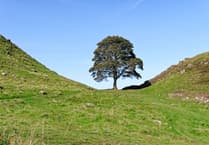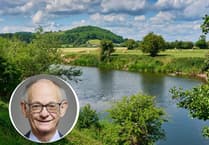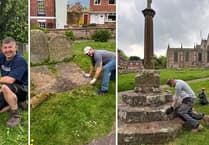This scheme, by the national Grid, is a significant investment in the region's electricity infrastructure, which will help ensure a continued safe and reliable supply. The work won't cause any disruption to electricity supplies in the area.
The cables being replaced run between the substations at Walford and Brelston Green. These cables were originally installed in the 1960s, and are now coming to the end of their operational life. Most of the work will take place on private land, so will cause a minimum of disruption to local residents.
Throughout the project, visitors to Goodrich Castle will get the best view of the work as it takes place.
Many readers will have seen the site of the work at Ross as it featured on the television programme Countryfile on Sunday evening.
The programme was comparing the benefits of underground cables opposed to the installation of hundreds of electricity pylons which will needed in some area to cope with the power produced by wind turbines.
The interviewer pointed out that cost is the main reason not to install underground cables. He said that it costs ten times the amount to lay cables underground as it does to go overhead. He said that the cost is between £18 – £22million per kilometre.
However another researcher, on a Radio 4 evening programme claimed that laying underground cables, especially in an area of outstanding natural beauty like Goodrich, made economic sense in the long term.
The project manager of the work taking place near Ross, Bob Hughes, said: "People enjoying the view from the castle may not realise that there's already a high-voltage underground cable going from Walford to Marstow, which runs underneath the River Wye. Once we've left the area, the view will be no different to how it is now. It will be difficult to spot any sign of us having been here.
"We're pleased that we can make this investment in the regional electricity infrastructure and keep the electricity network in first-class working order. We'll be working closely with the local community, and aiming to cause as little disruption as possible.
"Our community relations team is available 7am to 7pm, seven days a week, on 0800 073 1047, so we'll be able to respond quickly to any local residents who have questions. We're lucky to be working amongst such attractive scenery, and we will of course be putting everything back after we leave, even improving the habitat where possible."
The work will take place in two phases. First, trenches will be prepared and the new cable will be installed. This complex and highly skilled work will involve drilling underneath the River Wye and the A40, and will take us around two years to complete.
Once the new electricity cable is installed and operational, the old cable will be switched off and decommissioned. The land and soil will then be reinstated, along with any hedges or trees that have been removed.
National Grid has a policy of replanting more trees than it removes, and leaving improved habitat for wildlife. The whole project should be complete by 2016.
The work will be carried out by an alliance of partners working on behalf of National Grid, including Babcock, Amec and Mott MacDonald.




Comments
This article has no comments yet. Be the first to leave a comment.